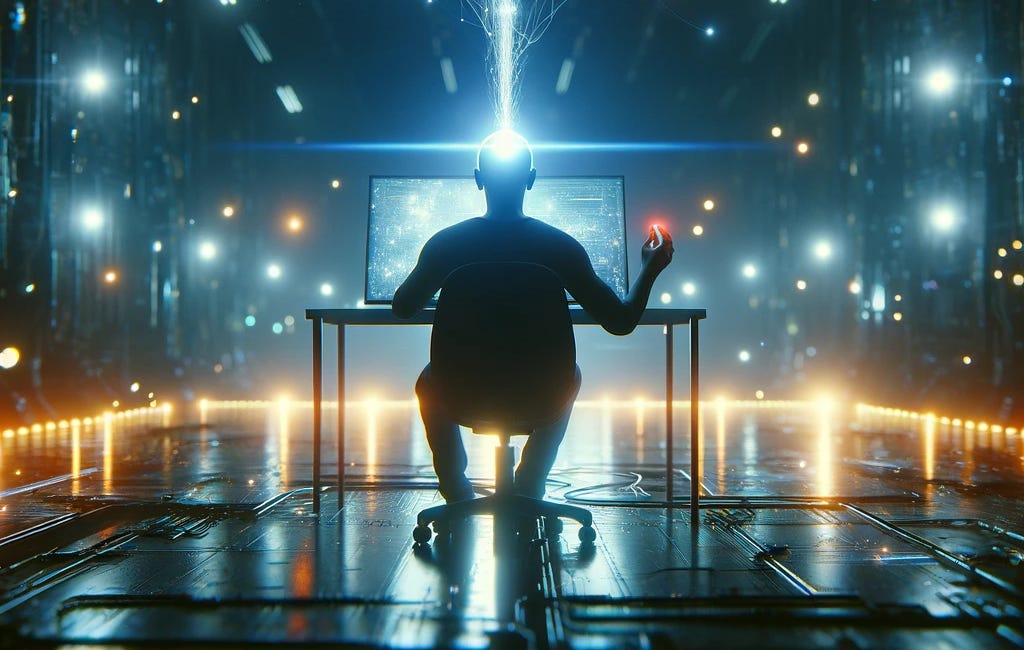Neuralink's Second Participant, Alex Says: “I’m already super impressed with how this works.”
PRIME Study Progress Update: Second Participant of Elon Musk's Neuralink's Implant Doing Exceedingly Well.
Good News From Musk’s Neuralink
Last month, Alex,* the second participant in the PRIME Study,** successfully received his Neuralink implant, known as the Link. The surgery, performed at the Barrow Neurological Institute, was a success, and Alex was discharged the following day. His recovery has been smooth, and he has already begun to explore the potential of the Link. This marks a significant milestone in Neuralink’s ongoing efforts to develop a high-performance interface that enhances digital device control for individuals with quadriplegia, aiming to restore their autonomy.
Elon Musk, the CEO and co-founder of Neuralink, has been deeply involved in the company's operations since its founding in 2016. In addition to leading Neuralink, Musk also heads other pioneering companies like SpaceX and Tesla, all while driving Neuralink’s mission to revolutionize neurotechnology. In September, Musk announced that the first volunteer patient would soon receive the Link implant, a procedure that was successfully performed in February of this year. This was followed by a second participant, with an announcement in this regard to this implantation made in July. In this update, we will explore the progress Alex has made with the Link, focusing on three key areas: the out-of-the-box experience, the repertoire of capabilities, and thread retraction mitigations.
Out-of-the-Box Experience
From the moment Alex first connected his Link to his computer, the setup process was remarkably swift. Within less than five minutes, he was able to control a cursor using only his thoughts. In just a few hours, Alex surpassed the maximum speed and accuracy he had achieved with any other assistive technology on Neuralink’s Webgrid task. Like Noland, Neuralink’s first participant, Alex set a new world record for brain-computer interface (BCI) cursor control on his first day of using the Link. After the initial research session, Alex continued to explore the Link's capabilities independently, using it to play the first-person shooter game Counter-Strike 2.
“I’m already super impressed with how this works.” — Alex, PRIME Study participant

Repertoire of Capabilities
Alex’s passion for building and creating has been reignited by the Link. Before his spinal cord injury, he worked as an automotive technician, a role that involved extensive hands-on work with vehicles and machinery. With the Link, Alex has been able to reconnect with this passion by learning how to design 3D objects using computer-aided design (CAD) software.
On the second day of using the Link, Alex successfully designed a custom mount for his Neuralink charger using Fusion 360, a CAD software. The mount was then 3D printed and integrated into his setup. To enhance his productivity with the Link, Neuralink is working with Alex to map different intended movements to various mouse clicks, allowing him to switch between modes in CAD software more efficiently.
“Taking an idea, putting it as a design, and actually having a physical item as a finished product makes me feel like I’m building things again.” — Alex, PRIME Study participant
In addition to CAD design, Alex enjoys playing first-person shooter games. Prior to the Link, Alex used a Quadstick, a mouth-operated joystick with sip-and-puff sensors, to play these games. However, the Quadstick's single joystick limited his ability to move and aim simultaneously. With the Link, Alex can now use his Quadstick in conjunction with the Link, enabling him to move and aim at the same time, resulting in a more immersive and intuitive gaming experience.
“Just running around is so enjoyable because I can look side to side, and not need to move Quadstick left and right… I can [think about where to] look and it goes where I want it to. It's insane.” — Alex, PRIME Study participant
Thread Retraction Mitigations
During the PRIME Study’s first phase, Neuralink’s initial participant, Noland, experienced thread retraction that temporarily reduced his BCI performance. However, his Link’s performance eventually recovered, leading to a new world record for BCI cursor control. To prevent a similar issue with Alex, Neuralink implemented several mitigations during his surgery, including reducing brain motion and minimizing the gap between the implant and the brain’s surface.
Neuralink is pleased to report that these measures have been effective, and there has been no thread retraction observed in Alex's case.
Looking Forward
As Neuralink continues to refine the capabilities of the Link, the focus remains on enhancing the control available to participants. New algorithms are being developed to decode multiple clicks and simultaneous movement intents, aiming to provide full mouse and video game controller functionality. Additionally, Neuralink is exploring ways to enable handwriting intent recognition, which could revolutionize text entry and communication for those with severe physical limitations.
In the future, Neuralink envisions the Link interacting with the physical world, allowing users to control robotic arms or wheelchairs, further restoring their independence.
“The Link is a big step on the path of regaining freedom and independence for myself.” — Alex, PRIME Study participant
Summing Up
The progress made by Alex in the PRIME Study is a testament to the potential of Neuralink’s technology to transform lives. As Neuralink continues to work with Alex and other participants, there is great excitement about the new ways the Link can empower individuals, helping them reconnect with their passions and regain their independence1.
*Name changed for privacy.
**The PRIME Study aims to evaluate the safety and efficacy of the Neuralink device in real-world settings.
Neuralink Achieves Breakthrough: First Human Controls Computer Mouse Through Thought
Neuralink's Breakthrough: Charting New Frontiers for those Facing ‘Incurable’ Conditions




